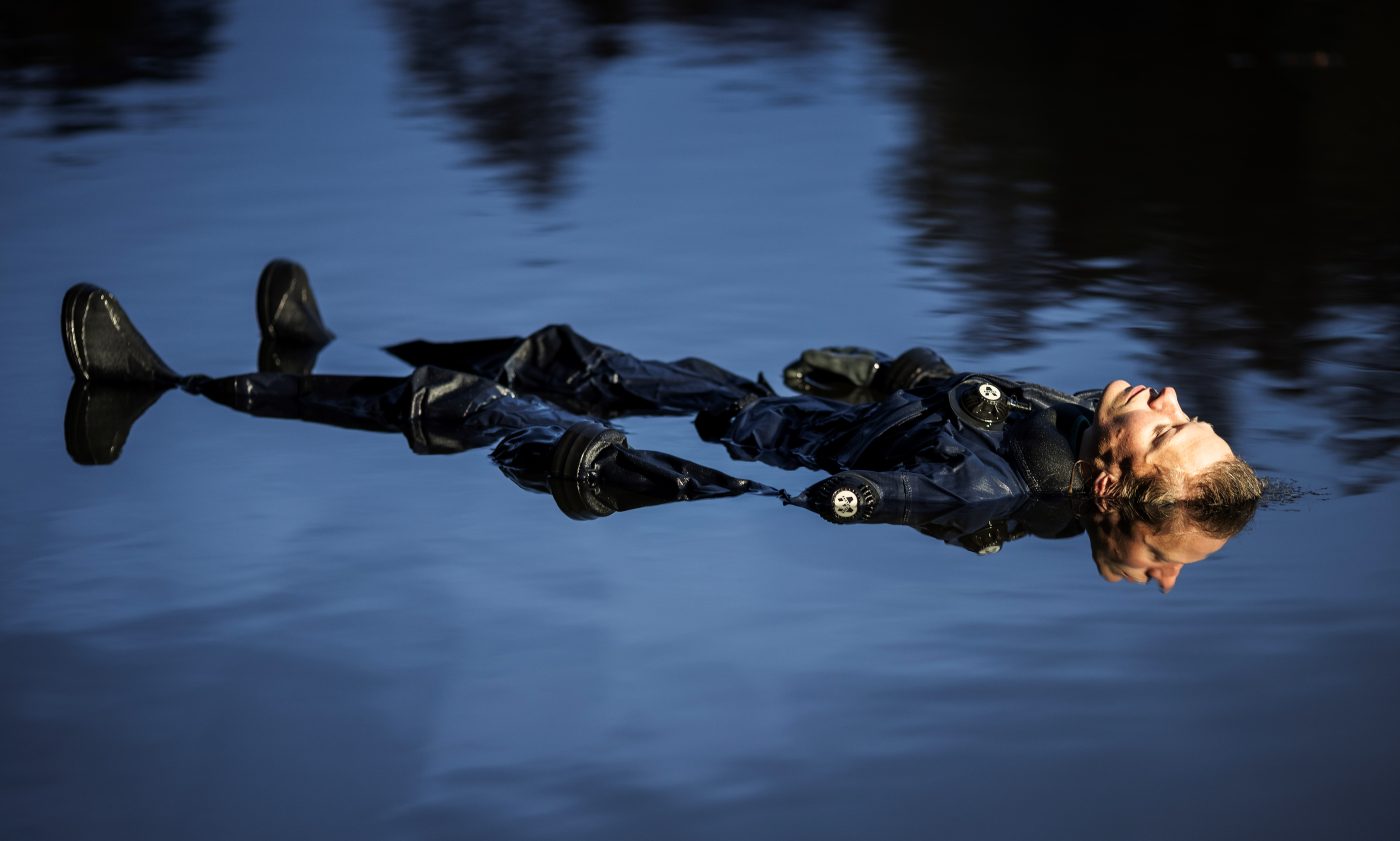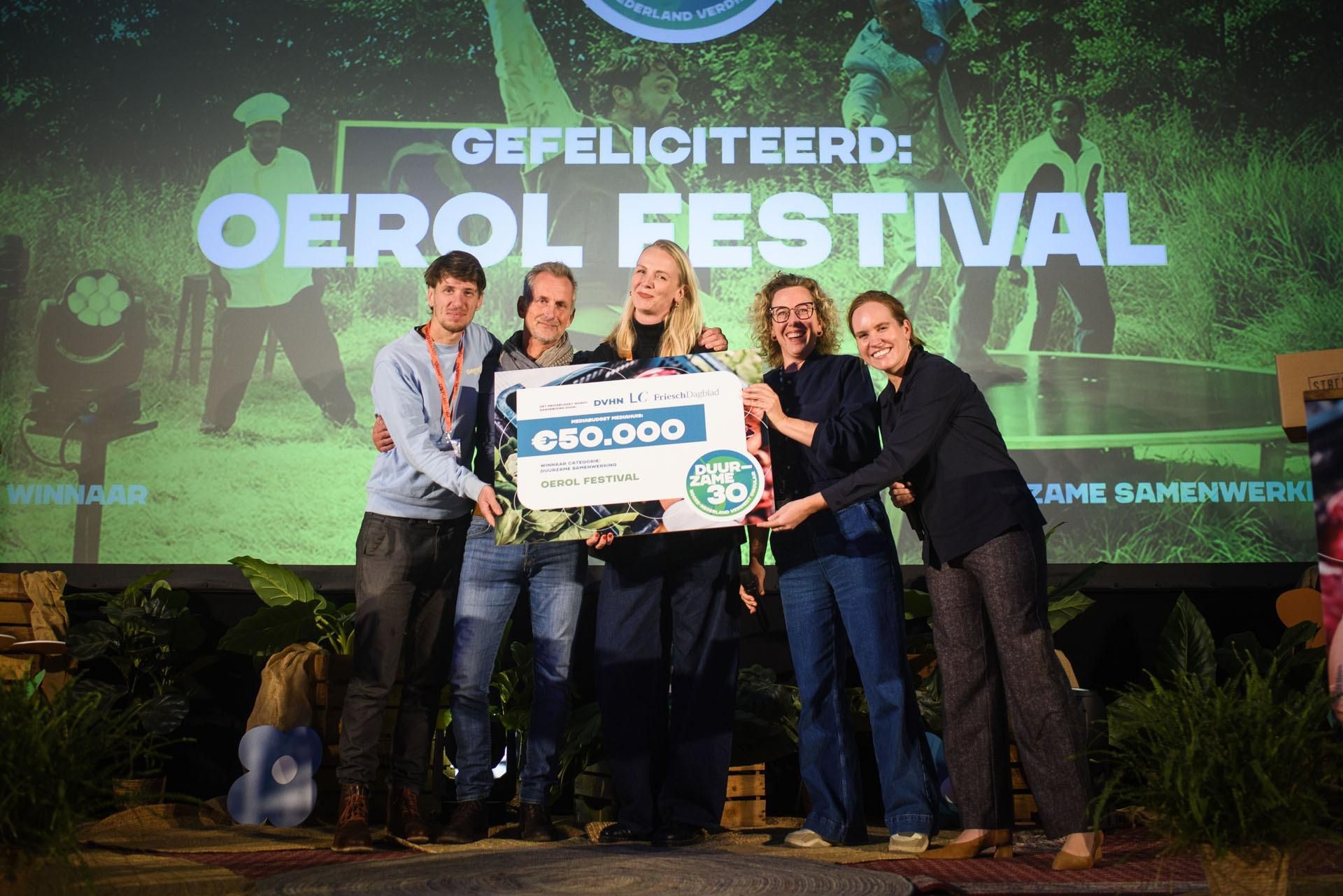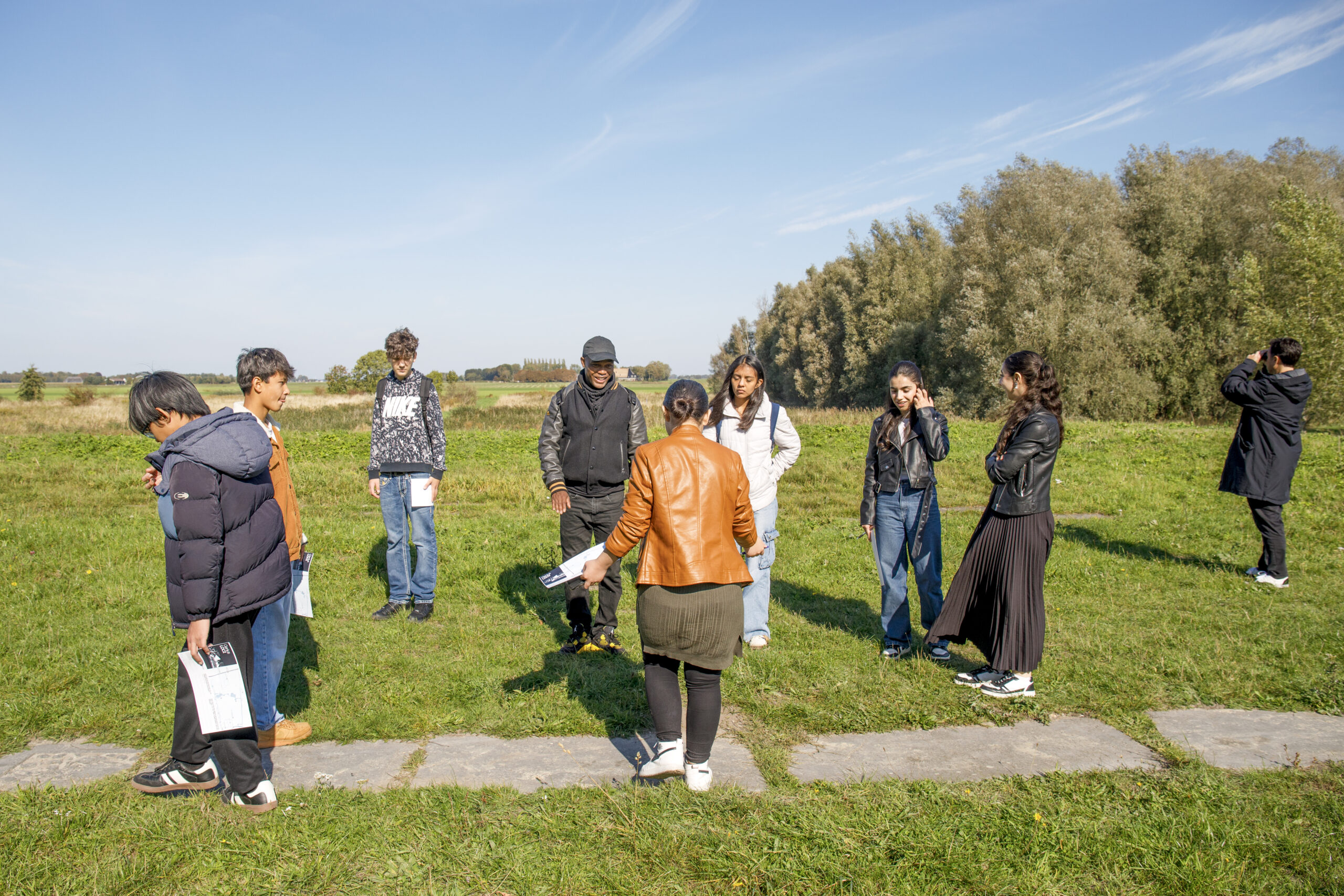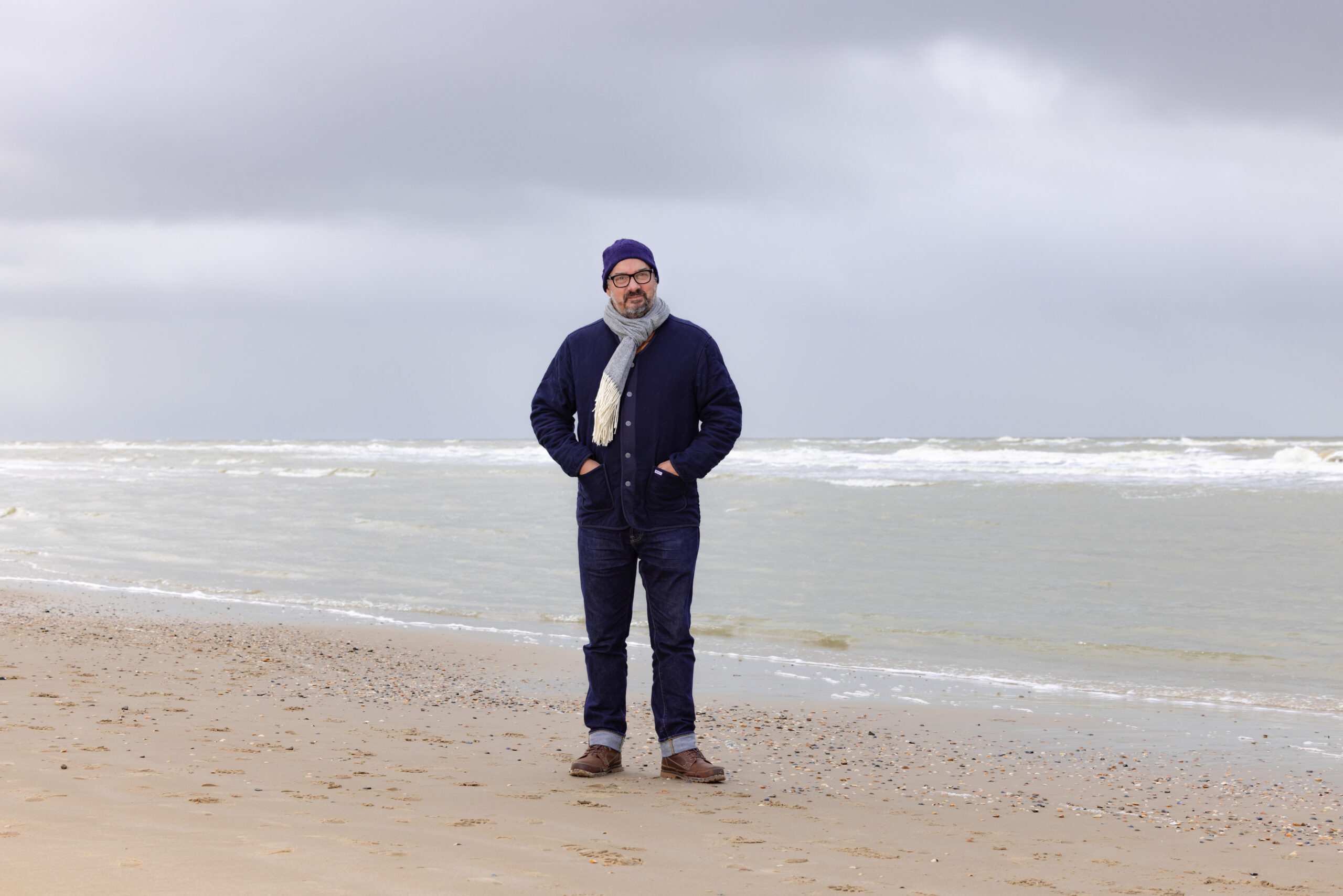In their enchanting outdoor performance “DJUPVASSTRÅKK” – in English “WATERLOGGED” – Norwegian sisters Julie and Cecilie Solberg explore the connection between humans and nature. This engaging performance takes place in and around the water at sunset, with the audience literally knee-deep in water. I spoke to them during their visit to Terschelling. As we walked past various locations on the island, the makers told me more about their performance.
This article is brought to you by the Friends of Oerol. Written by Pleun Broekhuizen.
You are bringing WATERLOGGED to Oerol this year, a performance set in water. What does water symbolize in your work?
Water is more than just a natural element. It flows through us, now, but also through those who came before us. In this way, water connects generations: it repeats, carries and transforms. Water symbolises both beginnings and endings: birth and death. Myths of creation around the world center around the water of origin, a timeless space where everything comes alive and dies at the same time. It slows down our movements and makes us surrender to the present. It invites us to listen: to the sounds and movements we make, but also to the sounds that arise outside our will: the animals, the wind, the place itself. This creates a conversation between everything that is present.
‘WATERLOGGED is inspired by Astrida Neimanis’ thought that water streams through all organisms and connects us all’. Does this help us find common ground, between humans and nature and between humans themselves?
WATERLOGGED is not so much about finding common ground as it is about exploring our role as humans in nature. The experience of connection is different for each visitor and depends on where you are: are you standing in the water and feeling the pressure on your body, or are you watching from a distance from land? The performance originates from the idea that water flows through all organisms and thus connects us: with each other, with nature, and with generations from the past and the future. This connectedness is not an ideal, but something you can experience in your senses. In the silence, in the encounter, in the movement of water, it becomes clear that we are part of something bigger. From a bird’s eye view we are just a whorl in the sea or a straw on the field.
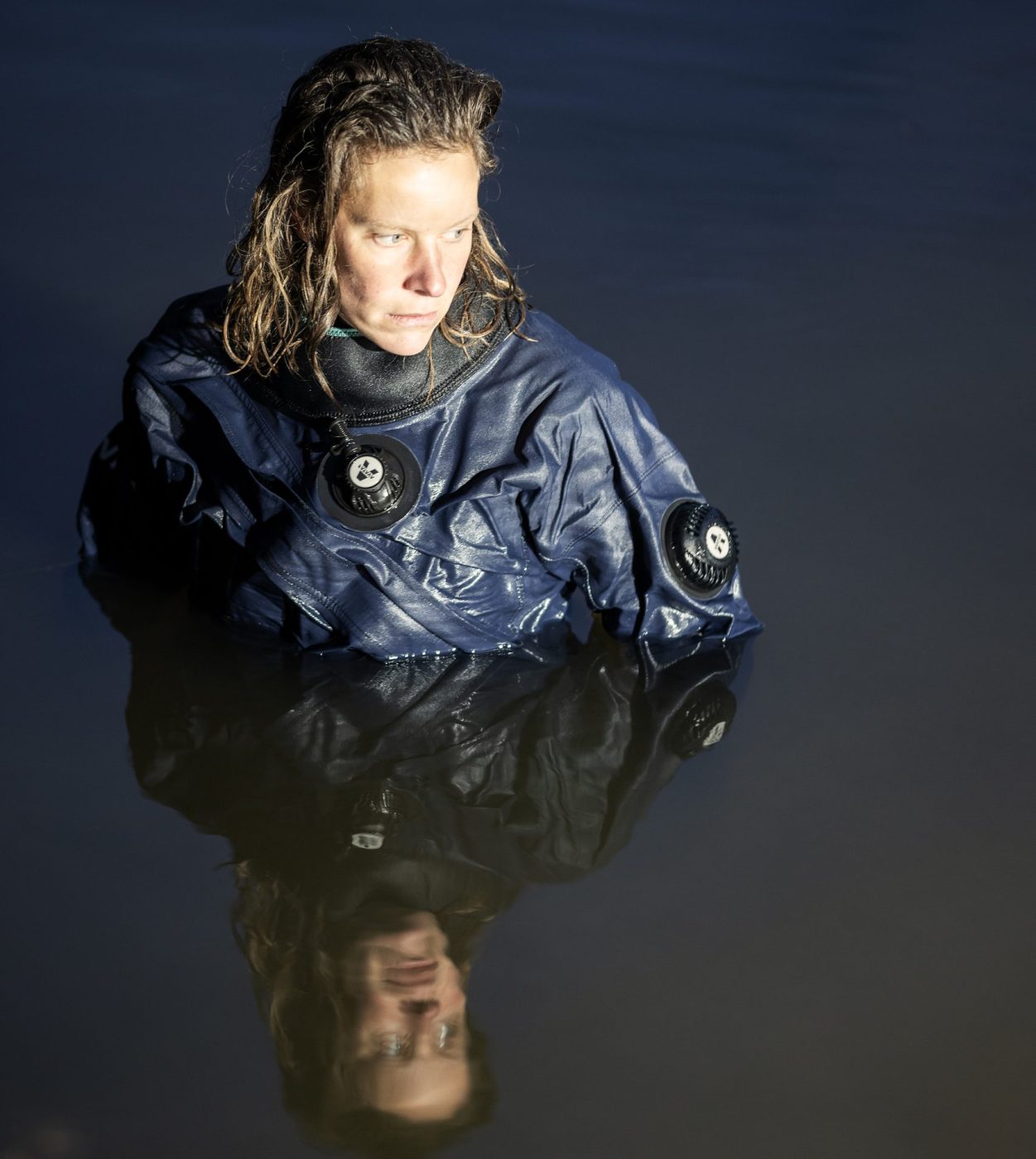
You invite part of the audience to stand in the water with you (in a wading suit) or sit near the water’s edge. Why did you decide to include this in the performance?
We want some visitors to experience it in a more intense, physical way. Those wearing a wading suit will experience that they are both moved by the water and that their own motions ripple into the unfolding performance. Standing in the water can feel like becoming part of nature, but it can also make you feel the difference between nature and the more cultivated parts of us. For some, water evokes tension, it can be dark and quiet, something you are drawn to, but which also feels unsafe. Nature has no morals and moves in its own way. The forces you find within nature are inevitably also present within humans, for better and for worse. This raises questions: Who are we as humans? What are we part of? What space do we take up? The experience is different for everyone and this part adds an extra layer to the performance.
WATERLOGGED takes place in the evening as the sun sets. How does this connect to your message?
The setting sun marks a transition: from light to dark, from the known to the unknown. It shows us how different our experience becomes once the light disappears. We enter a mysterious zone, a timeless space, where forces within us and nature battle. After sunset, nature comes alive in a different way and your senses are awakened. It can feel more intense, or raw even. In the dark, the unknown becomes tangible, and nature feels unpredictable and vivid. In our view it reveals a kind of uncanny feeling of being human. A strange mix of a conscious and mysterious wander between pulling and being pulled.
What is it like to perform in water? How does the water change the way you move?
During WATERLOGGED, we immerse ourselves in nature and therefore also in water. We wear three layers of wool under a drysuit to stay warm, because it cools down quickly in the water. And the resistance of the water makes it a lot harder for us to move. Everything slows down and each movement transforms, so we experience contact differently during the performance.

You are sisters, but also twins. Does this play a role in WATERLOGGED?
The fact that we are twins plays a role in the performance, but it is not central. For us, it remains rather something that takes plays in the background. For some people, it evokes a kind of uncanny feeling, the idea of being one and the same, as a future clone, or a mirroring, as a ghost. We invite the idea that we are no longer seen as individuals, but as a representation for humans as a species. Because we are twins, we can distance ourselves from the personal and a path to a collective opens up.
The performance will premiere at Oerol in June. What are you most looking forward to?
The extraordinary nature of Terschelling makes it enormously special for us. The island almost feels like a dream. We come together with our team: scenographer Mari L.B. Kamsvaag and light designer Corentin JPM Leven. As artists, we are concerned with ecological impact and that is always central to our work. That aligns perfectly with Oerol’s vision. We also look forward to our stay on the island before the festival starts. This allows us to really immerse ourselves in nature and connect with the place, which enriches the performance. We are enormously looking forward to Oerol!
WATERLOGGED can be seen throughout Oerol, with its premiere on 13 June! Tickets are available from 20 May in Friends presale and from 23 May in the regular sale, on oerol.nl. During the performance, (max.) 20 people can experience the show from the water in a wading suit.
